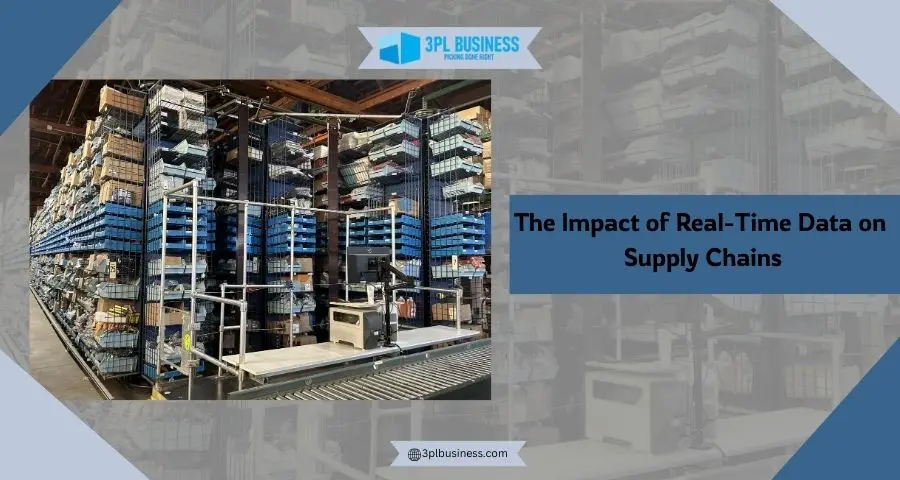Importance of Real-Time Data in Supply Chain
- May 19, 2025
- Posted by: admin
- Category: Uncategorized

Real-time data in supply chain management refers to the immediate collection, processing, and dissemination of information across all stages of the supply chain. This instantaneous data flow enhances supply chain transparency, providing stakeholders with up-to-date insights into inventory levels, shipment statuses, and production processes. Such transparency is crucial as it allows businesses to identify and address potential disruptions promptly, optimize operations, and meet customer demands efficiently. Incorporating real-time data is essential for modern supply chain management, enabling companies to respond swiftly to market fluctuations and maintain a competitive edge. This post explores the key benefits of real-time data in supply chains, the technologies that enable the same, and strategies to enhance data visibility within the supply chain.
Are you looking for a seamless supply chain process powered by real-time data? At 3PL Business, we offer integration services to streamline your logistics operations, ensuring efficiency and visibility. By partnering with 3PL Business, you enhance accuracy, reduce delays, and promote sustainable logistics. Contact us today to discuss your data integration requirements.
Key Benefits of Real-Time Data in Supply Chain Operations and Tracking
Integrating real-time data into supply chain operations offers numerous advantages that enhance efficiency, responsiveness, and decision-making capabilities.
- Enhanced Decision-Making: Access to real-time data allows supply chain managers to make informed decisions promptly. By monitoring current conditions, businesses can adjust production schedules, manage inventory levels, and respond to unforeseen disruptions effectively.
- Improved Inventory Management: Real-time inventory tracking helps prevent overstocking or stockouts by providing accurate, up-to-date information on product quantities. This precision supports better demand forecasting and reduces holding costs.
- Increased Supply Chain Visibility: Real-time data offers end-to-end visibility across the supply chain, enabling businesses and end users to monitor the movement of goods from suppliers to customer’s doorstep. This transparency facilitates proactive management of potential issues and enhances collaboration among partners.
- Cost Reduction: By leveraging real-time data, companies can optimize transportation routes, reduce fuel consumption, and minimize delays. Efficient resource utilization leads to significant cost savings in logistics and operations.
- Enhanced Customer Satisfaction: Providing customers access to accurate, real-time information about their orders enhances trust and satisfaction. This also includes transparency in delivery schedules and inventory availability.
Technologies Enabling Real-Time Data in Supply Chain
Incorporating real-time data into supply chain management is pivotal for enhancing efficiency, visibility, and responsiveness. Several advanced technologies facilitate the seamless flow of information across the supply chain, enabling organizations to make informed decisions promptly. Below are key technologies that empower real-time data integration in supply chain operations.
- Internet of Things (IoT): IoT devices, such as sensors and RFID tags, collect and transmit data regarding the location, condition, and status of goods throughout the supply chain. This continuous data stream provides organizations with comprehensive visibility into their operations, allowing for proactive management and swift response to potential issues.
- Cloud Computing: Cloud-based platforms facilitate the integration and secure storage of data from various sources within the supply chain. They offer scalability and accessibility, enabling stakeholders to access real-time information from anywhere, thereby enhancing collaboration and decision-making processes.
- Big Data Analytics: By analyzing large datasets, big data analytics uncovers patterns and trends within supply chain operations. These insights assist businesses in optimizing processes, forecasting demand, and improving service levels, leading to more efficient and responsive supply chain management.
- Artificial Intelligence (AI) and Machine Learning (ML): AI and ML algorithms process real-time data to enhance decision making in the supply chain. They enable predictive analytics, optimize routing, and improve demand forecasting, contributing to increased operational efficiency and agility.
- Blockchain Technology: Blockchain provides a decentralized ledger that records transactions securely and transparently. In supply chain management, it ensures data integrity and traceability, enhancing trust among stakeholders and facilitating secure information sharing.
Strategies to Enhance Data Visibility Within the Supply Chain
According to a report, the supply chain visibility software market, valued at USD 2.4 billion in 2023, is projected to grow at a high CAGR of 13% from 2024 to 2032. This expansion is primarily driven by the rise of e-commerce and omni-channel retail models worldwide. The U.S. retail e-commerce sales for Q1 2024 reached USD 289.2 billion, reflecting a 2.1% increase from the previous quarter. [KP1] As supply chain complexity increases, businesses must focus on strategies that improve real-time data visibility to remain competitive and efficient.
- Standardizing Data Across Partners: Ensuring consistency in data formats and communication standards among suppliers, logistics providers, and retailers eliminates discrepancies and enhances operational transparency.
- Developing Strong Supplier Collaboration: Maintaining open and proactive communication with suppliers ensures accurate forecasting, demand planning, and smooth inventory flow across multiple nodes.
- Adopting Cross-Functional Coordination: Encouraging collaboration between different departments (logistics, sales, procurement) prevents siloed data management and improves operational efficiency.
- Implementing Performance Metrics and KPIs: Establishing clear performance indicators helps businesses measure supply chain efficiency, identify inefficiencies, and track improvements over time.
- Building Contingency Plans for Disruptions: Having a structured response strategy for supply chain disruptions, such as sudden demand spikes or transportation delays, ensures resilience and continuity in operations.
- Improving Demand Forecasting Accuracy: Utilizing market trends, historical data, and consumer insights enhances forecasting capabilities, reducing risks associated with excess inventory or shortages.
- Streamlining Order Fulfillment and Distribution: Coordinating with fulfillment centers and last-mile delivery providers optimizes order processing and timely shipment deliveries, meeting customer expectations.
- Leveraging Third-Party Logistics Providers (3PLs): Partnering with 3PL services for on-demand warehousing, e-commerce fulfillment, and last-mile delivery enables businesses to scale operations efficiently and meet fluctuating market demands.
- Prioritizing Sustainable Logistics: Implementing eco-friendly packaging, optimized transportation routes, and carbon footprint reduction initiatives aligns with sustainable supply chain trends while improving overall visibility and efficiency.

Ready to take your supply chain visibility to the next level?
At 3PL Business, we ensure seamless data integrations that unify your platforms, streamline logistics, and deliver real-time insights across your supply chain. Whether you are using ERPs, marketplaces, WMS, or shipping solutions, our integration services help you operate smarter, faster, and with greater accuracy. Talk to our integration experts today at (732) 983-4801 or [email protected] to discover how we can transform your operations with real-time data.

